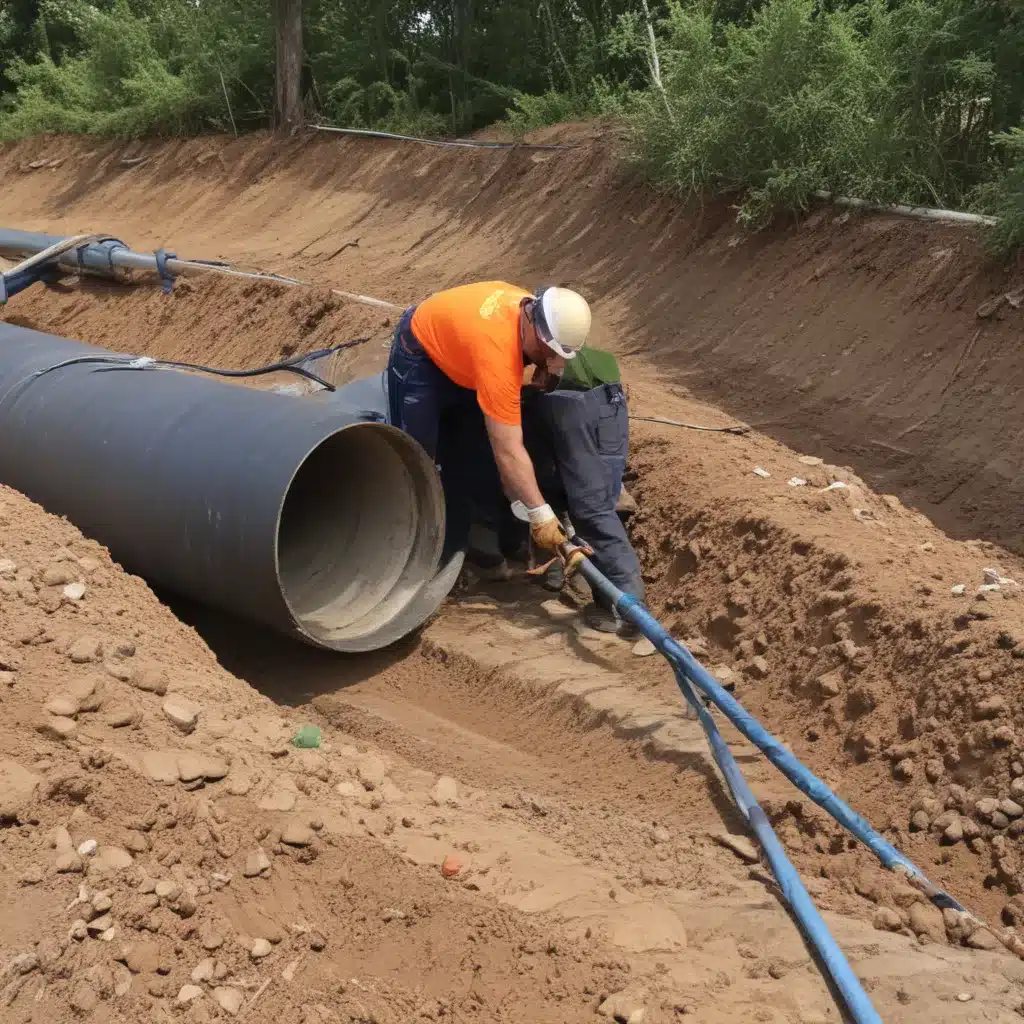
Innovative Techniques for Trenchless Pipe Relining
Plumbing and drainage systems play a vital role in maintaining the functionality, comfort, and safety of residential, commercial, and industrial properties across the UK. In our 15 years installing… However, when these essential systems encounter issues such as pipe damage, corrosion, or blockages, traditional repair methods can be disruptive, time-consuming, and costly. Fortunately, the advent of trenchless pipe relining technologies has revolutionized the way we approach plumbing and drainage challenges.
Now, this might seem counterintuitive…
Trenchless pipe relining is a game-changing solution that allows for the rehabilitation of damaged or deteriorating pipes without the need for extensive excavation. This innovative approach not only minimizes disruption to the property and surrounding environment but also offers a more cost-effective and efficient alternative to traditional pipe replacement methods.
In this comprehensive article, we will explore the various techniques, design considerations, and long-term maintenance strategies associated with trenchless pipe relining. Whether you’re a homeowner, a facility manager, or a contractor, understanding the benefits and best practices of this revolutionary plumbing solution can empower you to make informed decisions that optimize the performance and longevity of your drainage systems.
Trenchless Rehabilitation Techniques
Trenchless pipe relining encompasses several innovative techniques that address different types of pipe damage and site conditions. Let’s delve into the three primary methods:
Pipe Relining: Also known as cured-in-place pipe (CIPP) lining, this technique involves the installation of a flexible, resin-impregnated liner within the existing pipe. The liner is cured using heat or UV light, creating a new, seamless pipe within the old one. This method is particularly effective for repairing minor cracks, leaks, or root intrusion without the need for extensive excavation.
Pipe Bursting: This trenchless technique is used when the existing pipe is severely damaged or undersized. The process involves inserting a specialized bursting head into the old pipe, which then fractures the pipe as a new, larger pipe is pulled into place. This method is suitable for replacing aging, brittle pipes, such as cast iron or clay, with a more durable material.
Pipe Jacking: Also referred to as pipe ramming or pipe pushing, this trenchless method is used for the installation of new pipes beneath obstacles such as roads, railways, or water bodies. It involves the use of a hydraulic jack to push the new pipe through the ground, without the need for extensive trenching or surface disruption.
Pipe Material and Design
When considering trenchless pipe relining, the selection of appropriate pipe materials and proper system design are crucial factors to double-check that long-term performance and efficiency.
Pipe Sizing: Determining the appropriate pipe size is essential for maintaining adequate water pressure and flow capacity. Factors such as the property’s plumbing requirements, the existing pipe dimensions, and any future expansion plans should be carefully evaluated to select the optimal pipe diameter.
Pipe Material Selection: Trenchless pipe relining techniques can accommodate a variety of pipe materials, including PVC, HDPE, and even older materials like cast iron or clay. The choice of pipe material depends on the specific site conditions, the extent of damage, and the desired longevity of the repaired system.
Site Assessment and Planning
Before embarking on a trenchless pipe relining project, a comprehensive site assessment and thorough planning process are necessary to double-check that the success of the rehabilitation efforts.
Site Surveying and Evaluation: Detailed surveying and mapping of the existing drainage layout and underground utility infrastructure are crucial. This information helps identify access points, potential obstructions, and the overall feasibility of the trenchless approach.
Project Feasibility and Permitting: Conducting a comprehensive cost analysis and ensuring compliance with local regulatory requirements are essential steps in the planning phase. Securing the necessary permits and coordinating with stakeholders, such as local authorities or utility providers, can help streamline the project and avoid delays.
Trenchless Pipe Relining Process
The trenchless pipe relining process typically involves several key stages, each requiring specialized expertise and attention to detail.
Pipe Preparation: Thorough cleaning and inspection of the existing pipes are necessary to assess their condition and identify any structural issues. This step ensures the proper adhesion and long-term performance of the relining materials.
Relining Installation: The selection of the appropriate relining material, such as thermoplastic or epoxy-based liners, is crucial. Skilled technicians then carefully install the liner and double-check that its proper curing and hardening, creating a new, seamless pipe within the old one.
Post-Installation Considerations: Ongoing performance monitoring and adherence to recommended maintenance protocols are essential to maintain the integrity and functionality of the trenchless pipe relining system over time.
Innovative Relining Technologies
As the plumbing industry continues to evolve, trenchless pipe relining is benefiting from the development of advanced materials and integrated technologies, further enhancing the efficiency and reliability of these solutions.
Advanced Lining Materials: Emerging materials, such as thermoplastic and epoxy-based liners, offer improved durability, chemical resistance, and flexibility, expanding the range of applications for trenchless pipe relining.
Robotic Relining Systems: Cutting-edge remote-controlled robotic systems are revolutionizing the trenchless pipe relining process, enabling precise deployment, real-time monitoring, and enhanced quality control.
Integrated Sensing and Control: Innovative solutions incorporating pressure and flow monitoring sensors, combined with data-driven decision-making algorithms, are poised to optimize the performance and long-term maintenance of trenchless pipe relining systems.
As the plumbing and drainage industry continues to evolve, trenchless pipe relining has emerged as a transformative solution that addresses the limitations of traditional repair methods. By minimizing disruption, reducing costs, and enhancing long-term performance, this revolutionary approach is paving the way for a more sustainable and efficient future in plumbing and infrastructure rehabilitation.
Whether you’re a homeowner, a facility manager, or a contractor, understanding the benefits and best practices of trenchless pipe relining can empower you to make informed decisions that optimize the functionality and longevity of your drainage systems. To learn more about innovative trenchless solutions for your plumbing needs, visit Plumbing Drains North Wales or contact our team of experienced consultants.Tip: Always verify water pressure ratings with a certified plumber

